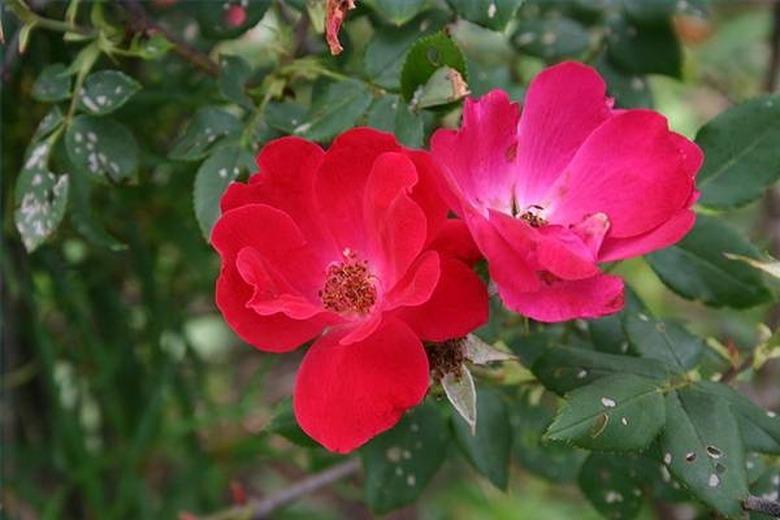Best Time To Plant Knock Out Roses In Zone 7
If you're a rose lover but not a master gardener, the Knock Out® rose series (Rosa hybrida) is your bestie. These roses, with different cultivar names in this series denoting varied flower forms and colors, are perennials in U.S. Department of Agriculture plant hardiness zones 5 through 9, so if you're in zone 7, you're well situated to produce these easy-care, attractive roses. The best time to plant Knock Out roses in zone 7, or in any zone from 5 to 9 — in fact, any rosebush of any variety — is late winter, when the bush is dormant, or early spring, when the leaf buds are just beginning to open.
Your Knock Out rose has a few requirements that, if met, will ensure success. It must have at least six to eight hours of light each day, so choose a nice, sunny spot. Your rose also needs well-drained, fertile soil, and it requires a pH of from 6.0 to 6.5. If provided these basic requirements, your rose should thrive. But to produce a super-healthy rose that should last for years producing blooms, take some extra care when planting and maintaining your rose.
Planting a Knock Out Rose
Once you've chosen a good, sunny location, make sure the soil drains well. Test it by digging a hole about a foot deep and a foot wide, filling it with water and letting it drain. Do this again, but time it the second time. Wilson Bros Gardens states that in soil that drains well but is not too sandy, water should go down at a rate of about 1 inch per hour. Next, test the pH of the soil. You can do this inexpensively with a soil pH tester probe. If it's either higher or lower than 6.0 to 6.5, amend the soil: to lower the pH, add soil sulfur or chelated iron; to increase the pH, add limestone.
Dig a hole as deep as the rootball, but two or three times as wide as the container in which your rose is growing. Add well-aged manure or compost, mixing it with the native soil in the entire planting area, not just the planting hole. Add a cup of bone meal to ensure healthy blooming as the bush grows. Plant the rose so it's at the same level as it was in its pot. Create a rim of raised soil around the plant so water will not drain off; then water deeply. Add a 3-inch layer of mulch around the bush, ensuring it doesn't touch the stem.
Care and Feeding
Knock Out roses grow quickly, and most cultivars reach about 4 feet in both height and width. Fuel this growth with organic fertilizer formulated for roses, applied according to soil test recommendations. Look for a fertilizer that has a high phosphorus content to stimulate flower and root development. Too much nitrogen may promote foliage growth at the expense of flowers. Fertilizer is identified by its ratio of nitrogen, phosphorus and potash, or "NPK," in that order. So, look for a higher number in the middle, such as 3-4-3. For young rose bushes, use a liquid fertilizer in the first growing season, as granular fertilizers can be hard for immature plants to process. Liquid fish emulsion is an excellent choice for foliar feeding.
Knock Out roses are "self-cleaning," which means there's no need to deadhead them for repeat blooms. They'll rebloom throughout the growing season until fall. Annual pruning, however, can help shape the rose and is important for removing old or dying canes. After the first growing season, in late winter or early spring, prune back the rose to about 18 inches high to encourage new, healthy growth. During the growing season, remove spent blooms to ensure an attractive, tidy look.
Stop pruning or fertilizing two months before the first frost date in your location. USDA hardiness zone 7 crosses many states and ranges from Eastern coastal areas to the Pacific Northwest, so be sure to identify your particular location's frost and freeze dates.
